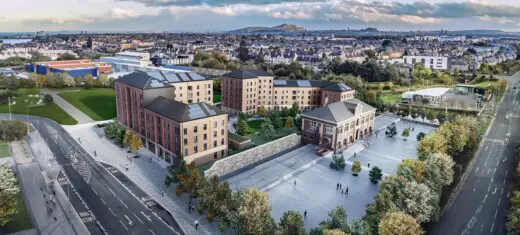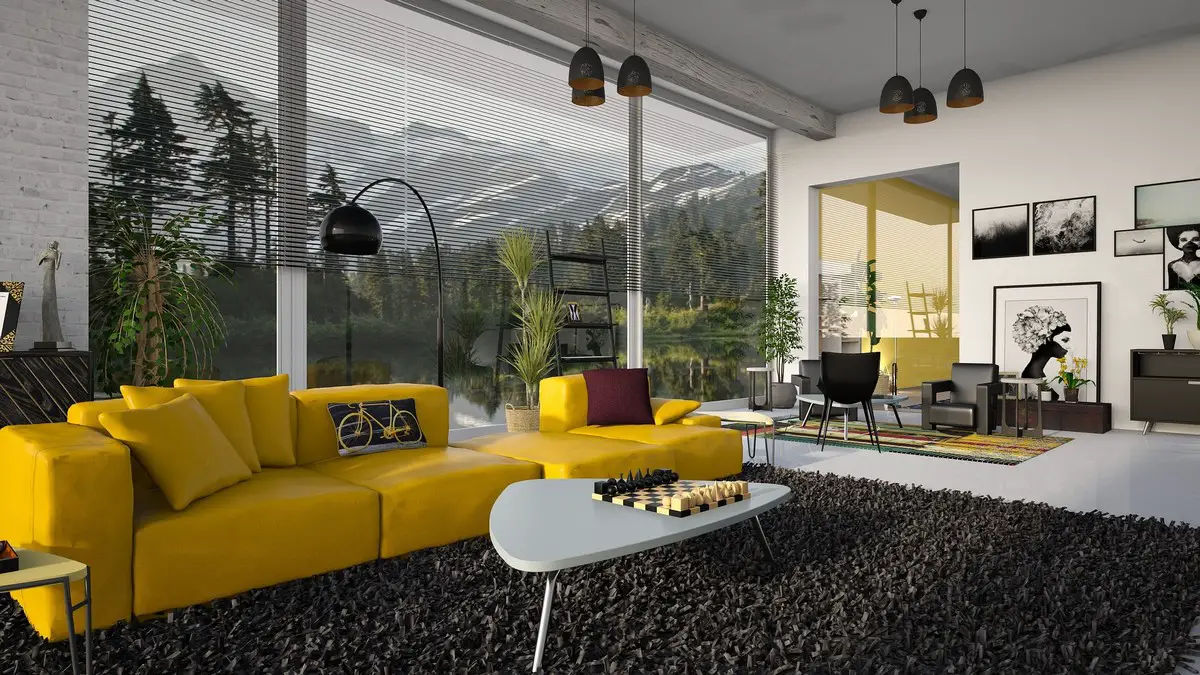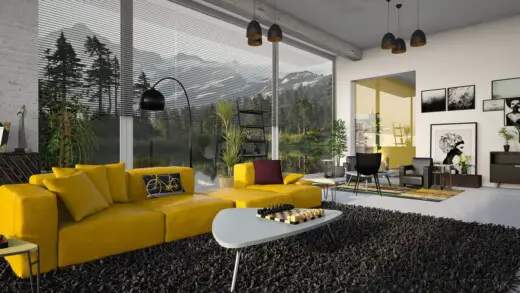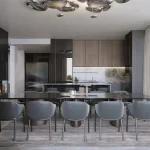Designing for the future, Smart spaces guide, Property tiling advice, Home granny flat tips
Designing for the Future: The Impact of Smart Spaces on Our Daily Lives
2 May 2023
As technology advances and becomes more integrated into our daily lives, it is no surprise that smart spaces are becoming increasingly popular. From homes to offices to public spaces, smart spaces are transforming the way we interact with the physical environment around us. In this article, we will explore the impact of smart spaces on our daily lives and how they are being designed for the future.
What are Smart Spaces?
Smart spaces are physical environments that are equipped with technology to enhance their functionality, efficiency, and convenience. They are designed to provide personalized experiences to users and to automate tasks, making daily life more convenient and streamlined. Smart spaces can be found in a variety of settings, including homes, offices, hospitals, airports, and public spaces.
Smart Home Design
Smart home design is becoming increasingly popular, with many homeowners looking to incorporate smart technology into their living spaces. Smart home technology includes devices such as smart thermostats, lighting systems, security cameras, and voice-controlled assistants. These devices are designed to make life more convenient, efficient, and secure.
One of the main advantages of smart home technology is its ability to learn from user behaviour and adjust accordingly. For example, smart thermostats can learn the user’s preferred temperature settings and automatically adjust the temperature based on the user’s presence in the home. Smart lighting systems can be programmed to turn on and off at specific times of the day, or to respond to voice commands.
Bathrooms are also an area where smart home technology can be incorporated. In addition to the convenience and comfort offered by smart home technology in the bathroom, it can also contribute to energy and water savings. Smart faucets and toilets, for example, Tile Importer’s toilet range, can be set to turn off automatically when not in use, reducing water waste. Smart showerheads can also regulate water flow and temperature to minimize water usage without sacrificing comfort.
Smart Office Design
Smart office design is also becoming increasingly popular, with businesses looking to create more efficient and productive work environments. Smart office technology includes devices such as smart lighting, climate control systems, and collaborative workspaces.
Smart lighting systems in offices can be programmed to adjust the lighting levels based on the amount of natural light available, or to respond to the presence of employees in the workspace. Climate control systems can be programmed to maintain a comfortable temperature in the workspace, based on the number of employees present and the outdoor temperature.
Collaborative workspaces are also becoming more common in smart office design. These workspaces are designed to encourage collaboration and communication among employees, with features such as interactive whiteboards, video conferencing technology, and shared workspaces.
Smart Public Spaces
Smart technology is also being integrated into public spaces, with the aim of making these spaces more efficient, convenient, and safe for users. Smart public spaces include parks, airports, shopping centres, and other public spaces.
Smart public spaces can be designed to provide users with personalized experiences, such as customized directions, recommendations, and other services. For example, smart airport technology can provide travellers with personalized flight information, directions to their gate, and recommendations for nearby restaurants and shops.
Smart public spaces can also be designed to enhance safety and security. For example, smart security systems can be programmed to detect and respond to suspicious behaviour, or to alert authorities in case of an emergency.
Designing for the Future
As smart technology continues to advance, designers are looking for new ways to incorporate this technology into the physical environment around us. One of the key challenges in designing smart spaces for the future is ensuring that they are scalable, flexible, and adaptable to changing user needs.
Scalability is an essential consideration when designing smart spaces. As the number of users increases, the technology must be able to handle the increased demand without compromising its functionality. This requires careful planning and design, to ensure that the technology is scalable and can be expanded as needed.
Flexibility is also important when designing smart spaces. Users have different needs and preferences, and the technology must be flexible enough to accommodate these differences. This requires a user-cantered design approach, with a focus on creating personalized experiences that meet the needs of individual users.
Adaptability is crucial when designing smart spaces. As technology continues to evolve, designers must be able to adapt and update the technology to keep pace with changing user needs and preferences. This requires a design approach that is responsive to changing technology and user feedback. For instance, building a luxury granny flat that incorporates smart home technology will not only make it more comfortable and secure for its elderly occupants but also make it easier to monitor their health and safety remotely. This requires a design approach that is responsive to changing technology and user feedback.
Another key consideration when designing smart spaces for the future is data privacy and security. Smart technology collects and stores vast amounts of data about users, including their behaviour, preferences, and location. It is essential to ensure that this data is protected and used in a responsible and ethical manner.
Designers must also consider the impact of smart technology on the environment. Smart technology can be energy-intensive, and it is essential to ensure that the technology is designed to minimize its environmental impact. This includes using energy-efficient devices, minimizing waste, and designing for sustainability.
Designing for the future: smart spaces impact Conclusion
Smart spaces are transforming the way we interact with the physical environment around us. From homes to offices to public spaces, smart technology is enhancing functionality, convenience, and efficiency. Smart technology is also being designed for the future, with a focus on scalability, flexibility, and adaptability to changing user needs.
Designers must also consider the impact of smart technology on data privacy, security, and the environment. By taking a user-cantered design approach, prioritizing data privacy and security, and designing for sustainability, designers can create smart spaces that enhance our daily lives while minimizing their impact on the environment.
In conclusion, smart spaces are the future of design. They offer endless possibilities for enhancing functionality, convenience, and efficiency, and are being designed with a focus on scalability, flexibility, and adaptability to changing user needs. As smart technology continues to advance, designers must also prioritize data privacy and security, and design for sustainability. By doing so, they can create smart spaces that enhance our daily lives while minimizing their impact on the environment.
Comments on this designing for the future: smart spaces impactarticle are welcome.
Architecture
Scottish Capital Building Designs – recent Lothian architectural selection below:
65 London Road
Design: 3DReid
65 London Road
Edinburgh’s flagship net zero carbon housing project

image courtesy of The Edinburgh Home Demonstrator (EHD)
Edinburgh Home Demonstrator project
Multi-Cultural Family Base Leith Building News
Designers: Ace Design Studio ; Consultant Interior Designer: Rachel Codd
image courtesy of architects practice
Multi-Cultural Family Base Leith Building
Scottish Capital Prperties
Scottish Capital Buildings – selection:
Jenners
Jenners
John Lewis
John Lewis Edinburgh
Comments / photos for the Designing for the future: the impact of smart spaces on our daily lives advice page welcome




